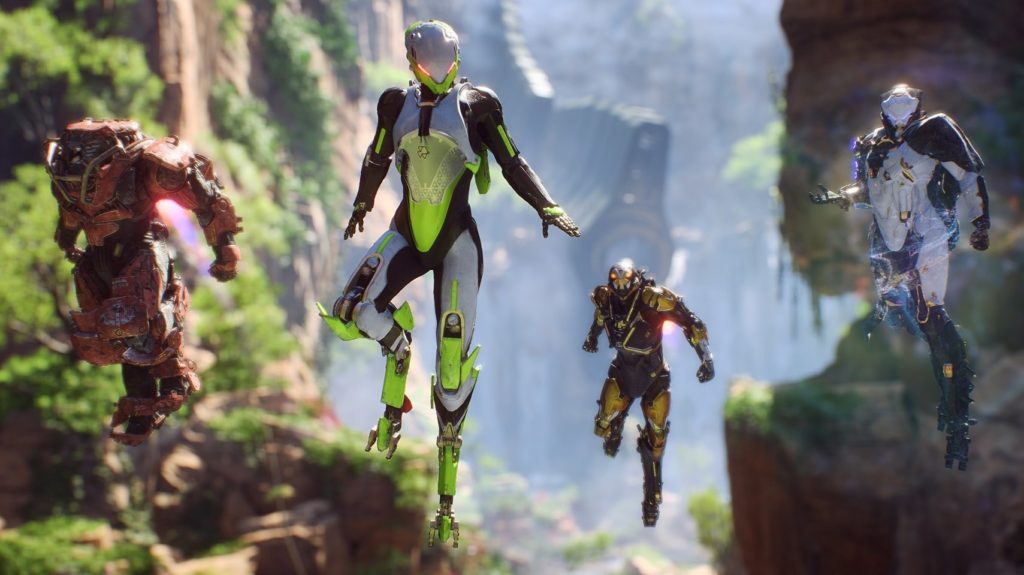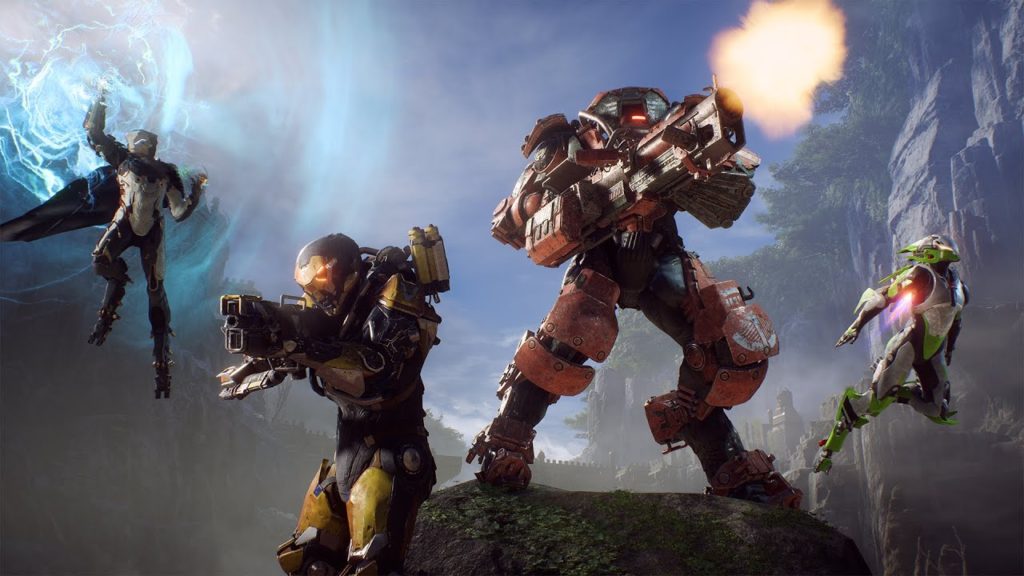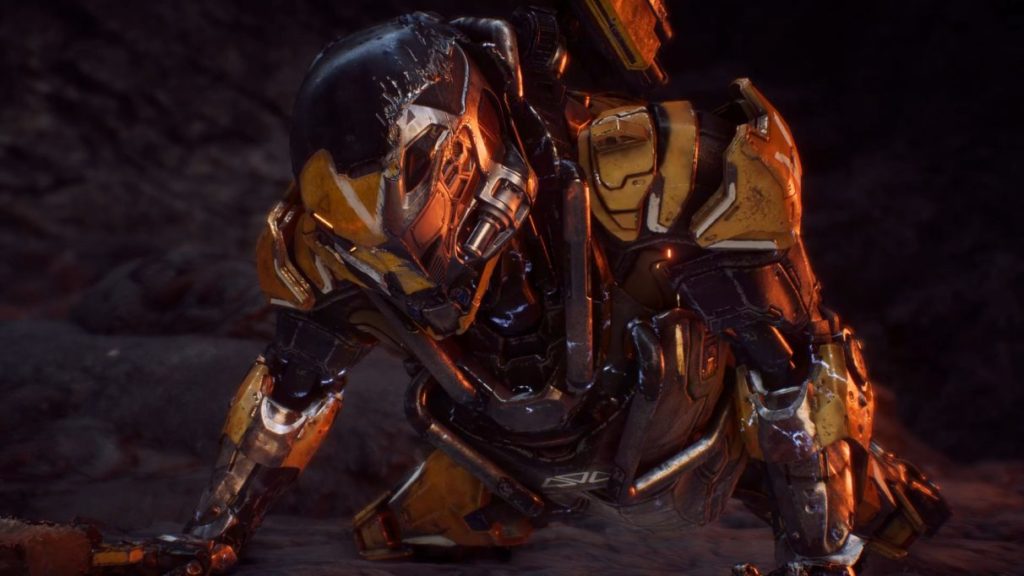Released at the end of February, Anthem became the lowest-rated game in the history of BioWare. It was raw, not ready for release and managed to annoy the players even at the demo stage. Kotaku portal spoke with 19 anonymous BioWare employees who worked directly on the game or were related to it. And they told me why it happened.

App2Top.ru highlighted the key points from the Kotaku investigation.
Conditionally, according to the material of Jason Schreier, author of the book “Blood, Sweat and Pixels”, Anthem has three fundamental problems:
- lack of a clear vision of the project;
- lack of a convenient development tool;
- weak management.
Lack of a clear vision of the project
- The first developments of the game appeared in 2012, when BioWare CEO Casey Hudson, together with a small team of like-minded people, began to prepare a project under the working name Dylan.
- Since the first concepts, Anthem has been positioned inside BioWare as “Bob Dylan from the world of games”. The developers planned to make a new industrial standard.
- Initially, it was about an online cooperative game where the player and his friends will confront an aggressive wild environment. The game has been compared to Dark Souls, Darkest Dungeon and even Shadow of the Colossus.
- The developers had a lot of ideas, but no one imagined how they would work together, whether it would be possible to scale them, whether the team would be able to implement them with the existing tools.
- In the first two years of development, there was no answer to these questions, and Casey Hudson, who was supposed to take the post of creative director of the project after pre-production, left the company.
- Even when the team started development directly, the management had no idea exactly what the game should look like, what mechanics should work in it. It even concerned the plot.
- At the start, the team wanted to move away from the standard BioWare stories. A science fiction story about exploring the world was planned. However, in 2015, David Gaider, the screenwriter of the Dragon Age series, was transferred to Anthem. The management set him the task of moving towards “scientific fantasy”. The team took his plot with hostility, it was not satisfied with the “sci-fi Dragon Age”. At the same time, the team itself did not really understand what kind of plot it wanted. A year later, Geider left BioWare.
- The leadership, formed from veterans of Mass Effect, could not stop at any particular idea in 2016. They kept looking for a concept that suited them. Negotiations, during which specific decisions were to be made, ended in nothing. Therefore, after four years of development, there was no general understanding of how the mission system should be built in the game, how the gameplay should look like.
- In part, the situation was resolved only at the beginning of 2017, when Electronic Arts design director Patrick Soderlund stated that the game build created at that time was unacceptable, and demanded to prepare a new version specifically for him. This forced the team to consolidate and focus on surprising Patrick. In particular, flights were returned to the game specifically for this. In six weeks, with the help of DICE, the team was able to prepare a version that the top manager of Electronic Arts liked.
- Based on this build, a fake Anthem demo for E3 2017 was prepared in June. In the future, it was from this video that they started when creating the game.

Lack of a convenient development tool
- One of the ideas is a fix Patrick Soderlund was the introduction of the Frosbite engine into all Electronic Arts games. For BioWare, this is a problematic engine since the beginning of the development of Dragon Age: Inquisition. But an even bigger problem was that BioWare did every new project, including Anthem, without taking into account its own developments. The Inquisition toolkit was not used for Mass Effect: Andromeda, and the solutions for Inquisition and Andromeda were not used in any way in Anthem. In fact, BioWare specialists had to reinvent the wheel every time.
- Frosbite, in turn, suffered from problems common to any internal solutions: high entry threshold, lack of detailed documentation, inflexibility.
- Initially, the engine was developed with an eye to first-person shooters, not role-playing MMO games. To add other mechanics, it was necessary to write everything from scratch.
- The latter complicated the verification of hypotheses and concepts. To test them, it was necessary to implement too much code, which led to situations when it takes several months to test a feature, and then it turns out that it does not fit the game.
- BioWare technical experts were forced to consult EA Frostbite on all issues, which supports all the publisher’s studios. Often, working with BioWare was not her priority. The priority depends on the potential revenue of the project, and role-playing games do not bring as much profit as FIFA or Battlefront.
- Also sometimes specialists BioWare was transferred by engine to other, at that time more urgent Electronic Arts projects.

Weak management
- Before Hudson’s departure, his team, which had previously created the original Mass Effect trilogy, was compared tothe Enterprise team, which followed the clear orders of Captain Jean-Luc Picard. The loss of the captain led to the fact that the management team was unable to make responsible decisions. Many Kotaku interlocutors accuse the project managers of indecision and lack of vision.
- Criticism from the team was ignored by the management.
- Management also ignored the advice of BioWare Austin employees, who were more experienced in launching MMO projects and operated the Star Wars game: The Old Republic. This concerned both fundamental things and the construction of history.
- Management refused to rely on the experience of competitors in the face of The Division and Destiny. On the contrary, they said that Anthem has nothing to do with these games. References to Diablo III were more favorably accepted as references.
- If something didn’t work, the decision was made not to try to rework the feature, but to start its development from scratch.
- One of the universal responses to criticism was an appeal to the experience of BioWare, which managed to bring the previous games to mind as part of the final sprint. This was called “BioWare magic”.
- The development entered the active phase only after a change of management, when Mark Darrah, who had previously worked on the Dragon Age series, was put on the project as a lead producer. This happened 16 months before the release. It was Mark who was able to force the team to make clear decisions.
- One of the developers admitted that the whole Anthem in the form in which it went on sale was made in six to nine months.
- The need to release the game no later than March 2019 led to giant crunches and a series of dismissals of leading developers.
The project is now being taken over by BioWare Austin. Concerning BioWare Edmonton, which was engaged in Anthem, then it moved on to the development of Dragon Age 4.
Also on the topic:
